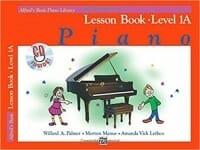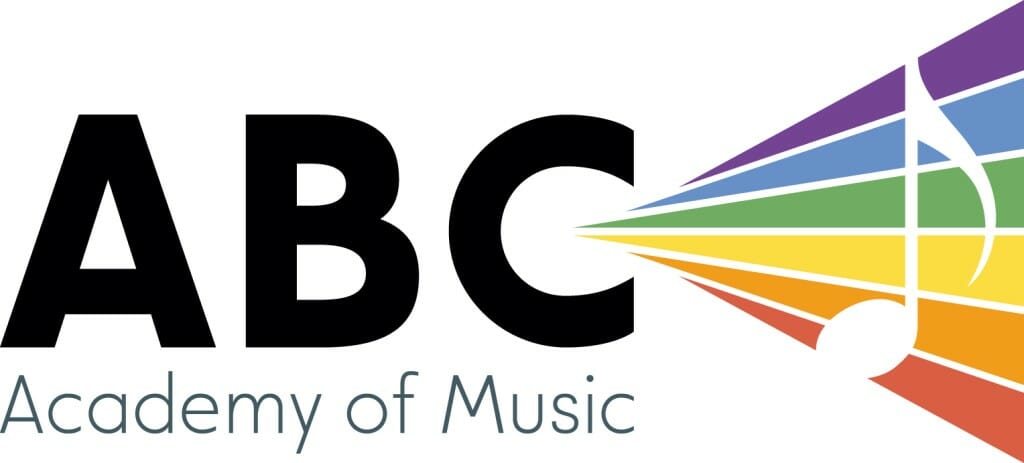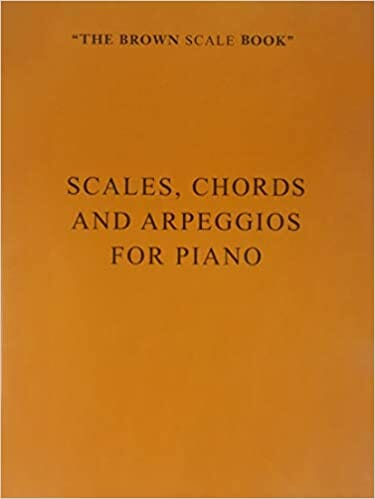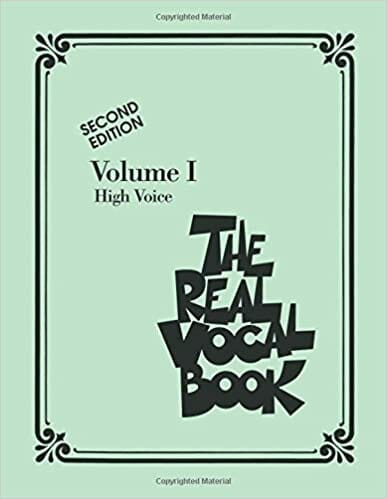B.Mus (Humber) in-progress
Adina is a singer-songwriter based in Toronto completing her Bachelor of Music degree at Humber College in vocal performance. Trained classically in piano since the age of 5, she has branched out into pop and jazz as well.
Vocally she is well-versed in many genres including jazz (she loves to scat!), musical theatre, pop, singer-songwriter, country, R&B, and acappella. She has 7 years of choir experience in both chamber and jazz styles. Adina has been writing and singing original songs since the age of 12, and has two singles as well as an EP out on all platforms under the artist name Adina V.
She has performed all across southern Ontario singing with the Toronto All-Star Big Band, as well as at various venues in the GTA with her own jazz duos and trios. As a member of the Cawthra Park Chamber Choir she performed at Roy Thompson Hall with the TSO for two years in a row. At Humber College she is part of the Vocal Jazz Ensemble led by Lisa Martinelli; this group performs advanced repertoire at events like the Ontario Vocal Jazz Festival.
Adina has been teaching music for the past 7 years and loves helping students meet their personal goals while fostering a love of music that lasts forever!
Get to know Adina…Beyond the Bio!
Hobbies: reading, puzzles, video games, painting
Musical Influences: Ella Fitzgerald, Nancy Wilson, Doris Day, Joni Mitchell, Taylor Swift, John Mayer
Favourite Food: Pad Thai
Least favourite food: eggplant
Favourite music: Indie rock and folk
Favourite song: All I Need by Jacob Collier ft. Mahalia & Ty Dolla $ign
Favourite movie: Matilda
Favourite movie music: The Pirates of the Caribbean theme
Favourite Musical: Dear Evan Hansen or The Last Five Years
Best Quote from your teacher: “It’s an amazing and wonderful experience to be able to be intentional about, in the moment, making music”
Favourite Quote: “Even as we are, we are becoming”
Favourite Book: The Girl With the Dragon Tattoo trilogy – Stieg Larsson
Best thing about teaching at ABC: Sharing and fostering a love of music with students of all ages
Latest Homework from Adina
Is Adina Your Teacher?
Sign up now to get your weekly assignments delivered, and never lose your homework sheet again!
Sunday, January 24th, 2021
Thank you for another great week of lessons – I can hear lots of progress already!
Emet
For warmup this week, continue playing the D minor triads hands separately. The main focus here is connecting between the inversions when playing broken. Remember that RH uses finger 2 instead of 3 in the first inversion, and LH uses 2 instead of 3 in the second inversion.
Hound Dog – Before playing the full song hands together, isolate just RH in bars 13-14 a few times, and then again in 15-16 to nail the counting. Count out loud using “ands” while you play. Note that in bars 9 and 21 LH plays an F on beat 4, not a G. Do your best to follow the articulation (specifically in bars 11 and 23, try your best to connect under the slurs – using finger 5 to 4 will help).
Raisins and Almonds – Again in this piece we will do a couple of bars isolated a few times before hopping in and playing the entire piece. It will be where the lyrics say “Oh, that dear memory” in the second last line; note that LH plays the exact same notes in both bars. Do be careful that LH does the Bbs as well as RH, and that you’re playing in the correct octave. You can try adding pedal to this piece this week!
Nathalia
We have moved on to a new key for our warmup! This week play G major triads, hands separately solid and broken. This is the 3rd key in this “family” – C, F, and G all have 3 white keys and all the same shapes, just different letters. Remember that in RH we use finger 2 instead of 3 for first inversion, and in LH we use 2 instead of 3 in second inversion.
Bye Bye, Love – This week please play up until bar 18 hands separately – this is essentially the whole “verse” of the song, and bar 18 begins the chorus. LH, watch your staccatos at the end of each phrase – that little dot under the note means we play it nice and short. In both hands, pay close attention to following the finger numbers – they are there to help you! Try going back and forth between RH’s triads in bar 16-17 – notice the relationship between the two (which note stays, which notes move, etc.). At the end of class we discussed intervals, which are the distance between two notes. RH plays a lot of sixths. When calculating what an interval is, always count the bottom note as “1”.
Kollel
Our warmup this week has changed – it’s the D major scale (2 octaves HT) and triads (1 octave HS for now).
In Church – “Largo” at the top of the page means “slow” – if you play your keyboards metronome, that is around the speed your eighth notes should be. You don’t need to play the piece with the metronome, but do listen to the beat for a few bars so you get a sense of the correct speed. For the most part your notes and rhythms are solid, but there are some bars/phrases in the first half to isolate. Just like we did in lesson, play bars 1-5 a few times to really nail the dotted quarter – eighth note rhythm. Then try 6-8. The trickiest of all is the beginning of the 2nd line – here I suggest taking 1 bar at a time and playing only until the 1st beat of the next bar. So for instance, bar 9 into the 1st beat of bar 10 a few times. Then, take bar 10 into the first beat of bar 11. This will help you get comfortable with the transitions and shapes, and most importantly the counting.
Etude in G Major – This is our new piece – you can definitely play the entire thing, just hands separately. It’s very important to follow all the articulation markings accurately since it’s easier to learn them correctly alongside the notes rather than unlearning any incorrect articulation down the road. RH is not too tricky, having just either legato or staccato notes, but LH has an interesting pattern of holding a dotted half note while beats 2 and 3 are staccatos. It’s very important that both 2 and 3 are equally short, since it’s easy to accidentally play beat 3 as a long note. Notice that there are a few clef changes in LH. This piece is in a waltz style – a waltz is a type of dance that is always in 3/4 time, and the emphasis is on beat 1 – LH try to incorporate this emphasis when you play.
Tuesday, January 26, 2021
Nice to see everyone again this week, I’m hearing lots of progress already!
Ken
We had spoken with your mom today about getting the next book in the Piano Adventures series – so the Lesson Book level 2A.
For the warmup this week, play around with the B position 5-note scale (this one’s tricky!) and see if you can play both major and minor. Remember that we always use one of each letter name in order, regardless if there are sharps or flats, so you will play B-C-D-E-F and then use your ear to figure out which notes need sharps!
Shepherd’s Song – This song is a lullaby, so please play it accordingly (slower, and softer). The “rit.” at the end means a gradual slow down, so try not to get dramatically slower all of a sudden. Please be really watchful of your counting and hold half notes and dotted half notes for their full amount.
Bongo Drum – In this piece the LH and RH are only ever playing in octaves; every 4 bars they both move to the new notes. Again, I am really stressing that counting is the priority – half notes must hold for two counts and whole notes for 4. If you hear that bars 3 and 4 sound like bars 1 and 2 double check your counting. The saying we use in the bass clef to help identify space notes is All Cows Eat Grass – so that LH space note will be C, for Cows, since it is in the 2nd space.
Steve
Let’s leave the scale warmup for now and we will revisit it another time. A theory concept we learned today is that when there is an accidental (sharp or flat) it applies to that note for the whole bar, and is only cancelled out by the next barline.
A Minuet for Mr. Bach’s Children – The notes and rhythms in this song are very solid, so to take it to the next level let’s work on making the song flow smoothly, without hesitations between the bars. What will help achieve this is starting a bit slower so you have time to think about what is coming next. The “rit” at the end means a gradual slowdown, so careful not to suddenly get much slower. A small detail that will help achieve contrast is making the staccato notes really short – let your wrist bounce a little bit to get them crisper.
Leftover Popcorn – This piece could use more attention to counting. If you start slower, you can keep a comfortable pace without rushing through the eighth notes. Remember, just because a certain bar or two are more comfortable doesn’t mean we play it faster – the whole song should be one speed, or tempo.
Mr. Brahms’ Famous Lullaby – At the beginning of this song we have what’s called a “pickup bar” which is an incomplete bar which when added to the very last bar should equal the correct number of beats. In this pickup bar we start on “3 and”, and then go to “1” after the barline. Please play this piece hands together from the get-go since the melody is in both hands.
Gabe
Today we talked about major vs. minor triads. Typically we describe a major sound as happy, and a minor sound as sad. You can experiment with playing a triad and changing the middle note to achieve both sounds. You can also start listening for triads in your pieces, since they are very common!
Canon (in D) – Please pay attention to the finger numbers when you are playing this version of Canon especially. There are 2 sharps in the key signature and it will be much easier to get your finger around the phrases if you place the right finger on the starting note. Also, please notice which hand is supposed to be playing at any given time. The second page could use some extra attention – the first page is already quite solid!
Theme from Don Giovanni – Again, please follow the finger numbers since they are the easiest way to play a phrase. For now, just play hands separately as this piece is less familiar. The RH has the melody so please focus on that and the counting (LH is just accompaniment and has easier rhythms).
Isaac
Please have pages 48 and 49 from your theory book completed for next week.
Frere Jacques Stands on His Head – The “Andante” at the top of the piece is a tempo marking that essentially means “moderately”, so you can actually play slower than you’ve been practicing! The slower speed will allow you to be more consistent, since ideally we want to whole piece at one tempo. A slower start ensures any bars with eighth notes will be more comfortable as well. Note in the second line the half notes come in on beat 3.
Climb up on an Elephant – Please double check which octave you are meant to be playing in! This piece has a large range. The second half could use some more attention – today we circled the spots where RH and LH come in together on the F to Bb, which are important parts. Same as last week let’s still isolate bar 19 a few times before playing the whole piece since that is the trickiest bar of the song.
Wednesday, March 31st, 2021
Dvorah
Recommended minutes to practice: 10 minutes a day
What to practice: Best Friends, Gorilla in the Tree, and My Invention
How to practice it most effectively: Today we reviewed what middle C looks like on the keyboard, and how it can be played in either RH or LH. The three notes we know on the staff so far are: middle C for both hands, F for LH (on the 4th line of bass clef), and G for RH (on the 2nd line of treble clef). Remember that the staves move together in time, so in My Invention, you have to watch out which hand is playing first. Our positions in these songs are no longer just C position – the finger numbers are written beside each hand’s starting note.
Diya
Recommended minutes to practice: 15 minutes a day
What to practice: G major scale (hands together), labelling notes on the bottom of page 4, memorizing sayings for treble and bass clefs, sigh warmup, A Million Dreams
How to practice it most effectively: The G major scale when played hands together has RH and LH finger 3s lining up on E and B. Go slowly, and make sure the same note is being played in both hands. The sayings for treble and bass clef are Every Good Boy Deserves Fudge and FACE sayings for treble clef (RH) and Good Birds Don’t Fly Away and All Cows Eat Grass for bass clef (LH). I like to think of treble clef being humans, and bass clef being animals. For the sigh vocal warmup, start on “ah” around an E, and slide down to the bottom of your range smoothly. For the second sigh, start higher on an A. Finally, the third sigh you can do starting on a high D and sliding all the way down. In A Million Dreams, continue singing along to the lyric video on youtube (so not karaoke yet). Your verse starting note is middle C, pre-chorus starting note is A, and chorus starting note is D – play these when you get to that section in the lyric video to help you stay on track with the melody!
Marco
Recommended minutes to practice: 10-15 minutes a day
What to practice: Firefly, finishing the composition, and labelling notes on bottom of page 7
How to practice it most effectively: In Firefly, there are lots of steps and skips using all the C position notes we’ve learned in our previous book. Use sayings Every Good Boy Deserves Fudge and FACE sayings for treble clef (RH) and Good Birds Don’t Fly Away and All Cows Eat Grass for bass clef (LH). Be extra careful with your steps versus skips. These sayings should be reviewed from time to time because they are very helpful and should eventually be memorized.
Alice
Recommended minutes to practice: 15 minutes a day
What to practice: C position warmup (hands together), Elephant Ride, “loo loo loo” vocal warmup, and Love You Like a Love Song
How to practice it most effectively: The piano C position warmup will have RH finger 1 on C and LH finger 5 on C. Walk the hands up and back down matching the letters and doing your best to connect between the notes. In Elephant Ride we have lots of skips, but these ones go from space to space instead of line to line. Steps will always move line-space-line-space in order. If you’re ever stuck on a note, use your Every Good Boy Deserves Fudge and FACE sayings for treble clef (RH) and Good Birds Don’t Fly Away and All Cows Eat Grass for bass clef (LH). For the “loo loo” vocal warmup, start on the C above middle C and give yourself your starting note. The warmup is 5 note steps going down. After C go down to B as a starting note, then A, etc. until it gets too low to sing. For Love You Like a Love Song, alternate singing with the original track and the Sing King karaoke. When singing with the karaoke, play the letter E above middle C on the piano during the chorus to keep you on track. Play on “I” and the first 2 “love song baby”s.
Emet
Recommended minutes to practice: 20 minutes a day
What to practice: B major scale (1 octave hands separately), Piano Man, and Scherzo (we will start with this one next week).
How to practice it most effectively: In the B major scale we use all the black keys (so 5 sharps). RH uses regular fingerings, but LH uses 4-3-2-1-4-3-2-1 (so finger 5 never plays). Piano Man can be played all hands together now! Just be extra careful in all the bars where we circled the eighth note rhythms. Also, in the “dah dah” section, go slowly and make sure the ties are holding through. Bars 5 to 8 could use some isolation time – RH specifically should play them through a few times with correct rhythm and holds, and then LH can be added in. Please continue to practice the Scherzo, even though we didn’t get to it this week.
Kollel
Recommended minutes to practice: 25 minutes a day
What to practice: Bb major scale (hands separately 2 octaves), Prelude, Canon
How to practice it most effectively: In the Bb major scale, remember that RH always plays 4 on Bb and 3 on Eb, while for LH it’s the opposite – 3 on Bb and 4 on Eb. In the Prelude, please isolate RH in bars 14 and 16, and LH in bars 17-19 for correct articulation. RH should be legato all through its scale, and LH’s staccatos in bar 18 will help you get to where you need to be regardless of fingerings. After playing these sections a few times in just one hand, you may add in the other. Please also double check the notes for pickup to bar 9. For the Canon, bravo for getting it all hands together! Now we can start adding in dynamics. Do be thinking of the letters involved for each triad that LH’s chord progression is based on (of course, they will follow our D major key signature – using F# and C# where needed).
Preferred Books for Adina’s Students
Click to buy them here, and they’ll come right to your house! What could be easier?
Alfred's Basic Piano Library Lesson Book 1A

Alfred's Adult Basic All-In-One
Alfred’s Basic Adult All-in-One Course is designed for use with a piano instructor for the beginning student looking for a truly complete piano course. It is a greatly expanded version of Alfred’s Basic Adult Piano Course that will include lesson, theory, and technique in a convenient, “all-in-one” format. This comprehensive course adds such features as isometric hand exercises, finger strengthening drills, and written assignments that reinforce each lesson’s concepts. There is a smooth, logical progression between each lesson, a thorough explanation of chord theory and playing styles, and outstanding extra songs, including folk, classical, and contemporary selections.
The Brown Scale Book
This essential resource includes all major and minor scales, triads, arpeggios, dominant sevenths, and chromatic scales organized by key. A favorite for decades, The Brown Scale Book belongs in every student’s library.
The Real Vocal Book
The Real Vocal Book has many of the selections from Volumes 1 and 2 of the instrumental Real Books, but now with complete lyrics added to the pre-existing melody line. This edition features 300 essential songs arranged for low voice, including: Alfie * All of Me * Autumn Leaves * Bewitched * Bluesette * Don’t Get Around Much Anymore * Fever * Georgia on My Mind * Misty * Moon River * My Funny Valentine * Satin Doll * and more. Looking for a particular song? Check out the Real Book Songfinder here.









